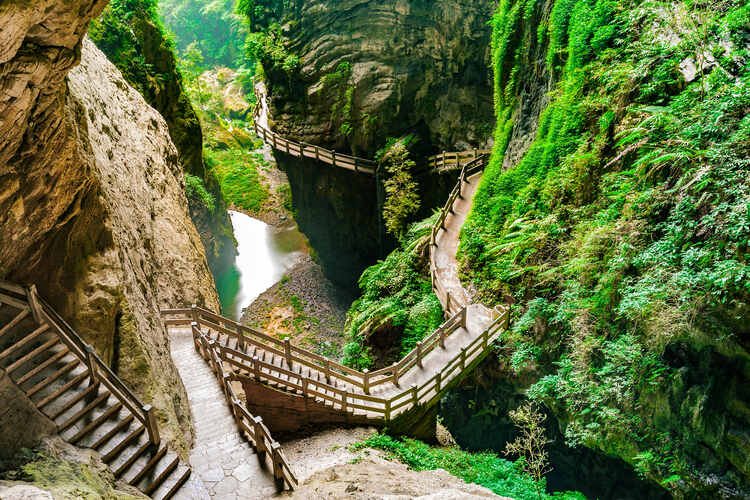
A 192-metre deep China sinkhole with huge 40-metre trees, plants and potential new species found in Guangxi region
By
A giant karst sinkhole, more than 190 metres (620ft) deep, was discovered in Leye County in the Guangzi region in southern China – the 30th to be found in the region – containing a well-preserved primitive forest alongside the potential of new species.
The karst sinkhole named ‘The Eagle’ is 150 metres wide, and with its volume exceeding 5 million cubic metres, it is categorised as a large sinkhole. These types of sinkholes are sometimes referred to as ‘Heavenly pits’ or ‘Tiankeng’ in Chinese.
Related articles
‘The Eagle’ is part of a series of sinkholes interconnected via a cave system and an underground river, making the largest cluster ever discovered south of the Tropic of Cancer, according to Zhang Yuanhai, a member of the team organized by the Institute of Karst Geology of China Geological Survey.
After abseiling over 100 metres to the bottom of the pit with other team members, leader of the Guangxi 702 cave expedition team Chen Lixin noted the ancient trees at the bottom were almost 40 metres high, with some plants growing at shoulder height.
‘The tree vines were entangling us like spider webs, and you have no idea how deep your next step was going to be,’ Lixin said. ‘The plants were so brittle that you could pull them down with your hands, but they’d recover just as quick. When we came back [up], the path was hidden again.’
‘I wouldn’t be surprised to know that there are species found in these caves that have never been reported or described by science until now,’ Lixin continued.
What is a karst landscape?
Karst is a type of land that is composed of limestone, a soft rock that can dissolve easily in water, and covers around 13 per cent of eastern and southeastern Asia. Sinkholes can form in karst areas, as rainwater containing carbon dioxide becomes slightly acidic and erodes the bedrock. If enough cracks form in the bedrock, a sinkhole can open up.
Typical features of a karst landscape include gorges, sinking streams, natural bridges, natural springs, and sinkholes as seen in the recent discovery in the Guangxi Province.

Large karst sinkholes also act as a conduit to underground water reservoirs or aquifers – providing a primary water source for over 700 million people worldwide – and over 80 World Heritage Sites and 70 UNESCO Global Geoparks were designated entirely, or partially, for their karst and caves. The South China Karst, which includes the province of Guangxi among several others, is a Unesco World Heritage Site, due to its unique karst features and landscapes. Covering 97,125 hectares, it contains many significant types of karst landforms including tower karst and pinnacle karst.
The Guangxi Province is a prime example of a mature karst landscape of cone karst. These landscapes are developed due to deep layers of limestone and dolomite bedrock covering large sections of southeastern China. Due to the region’s high rainfall, this bedrock is easily dissolved.
According to UNESCO, ‘the [South China Karst] contains the most spectacular, scientifically significant and representative series of karst landforms and landscapes of South China from interior high plateau to lowland plains and constitutes the world’s premier example of humid tropical to subtropical karst: one of our planet’s great landscapes.
Karsts are found across the world, including the Causses of France, the Yucatán Peninsula and the Middle West, Kentucky, and Florida in the US.



